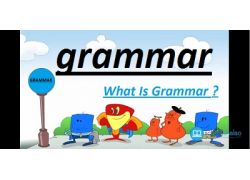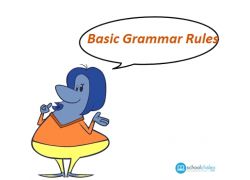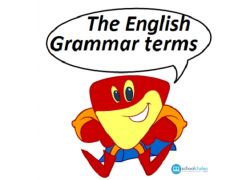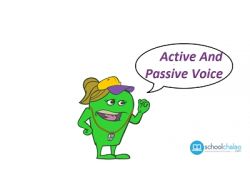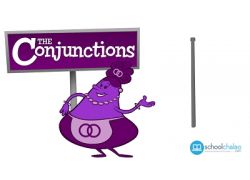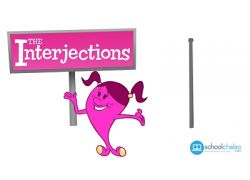Tutorial Library
Learning Point
Verbs
What is a Verb?
The verb is king in English. The shortest sentence contains a verb. You can make a one-word sentence with a verb, for example: "Stop!" You cannot make a one-word sentence with any other type of word.
Verbs are sometimes described as "action words". This is partly true. Many verbs give the idea of action, of "doing" something. For example, words like run, fight, do and work all conveys action.
But some verbs do not give the idea of action; they give the idea of existence, of state, of "being". For example, verbs like be, exist, seem and belong all convey state.
A verb always has a subject. (In the sentence "John speaks English", John is the subject and speaks is the verb.) In simple terms, therefore, we can say that verbs are words that tell us what a subject does or is; they describe:
- Action (Ram plays football.)
- State (Anthony seems kind.)
There is something very special about verbs in English. Most other words (adjectives, adverbs, prepositions etc) do not change in form (although nouns can have singular and plural forms). But almost all verbs change in form. For example, the verb to work has five forms:
- to work, work, works, worked, working
Of course, this is still very few forms compared to some languages which may have thirty or more forms for a single verb.
Verb Classification
We divide verbs into two broad classifications:
Helping Verbs
Imagine that a stranger walks into your room and says:
- I can.
- People must.
- The Earth will.
Do you understand anything? Has this person communicated anything to you? Probably not! That's because these verbs are helping verbs and have no meaning on their own. They are necessary for the grammatical structure of the sentence, but they do not tell us very much alone. We usually use helping verbs with main verbs. They "help" the main verb. (The sentences in the above examples are therefore incomplete. They need at least a main verb to complete them.) There are only about 15 helping verbs.
Main Verbs
Now imagine that the same stranger walks into your room and says:
- I teach.
- People eat.
- The Earth rotates.
Do you understand something? Has this person communicated something to you? Probably yes! Not a lot, but something. That's because these verbs are main verbs and have meaning on their own. They tell us something. Of course, there are thousands of main verbs.
In the following table we see example sentences with helping verbs and main verbs. Notice that all of these sentences have a main verb. Only some of them have a helping verb.
|
|
Helping verb |
|
Main verb |
|
|
John |
|
|
likes |
coffee. |
|
You |
|
|
lied |
to me. |
|
They |
|
|
are |
happy. |
|
The children |
are |
|
playing. |
|
|
We |
must |
|
go |
now. |
|
I |
do |
not |
want |
any. |
Helping verbs have no meaning on their own. They are necessary for the grammatical structure of a sentence, but they do not tell us very much alone. We usually use helping verbs with main verbs. They "help" the main verb (which has the real meaning). There are only about 15 helping verbs in English, and we divide them into two basic groups:
Primary helping verbs (3 verbs)
These are the verbs be, do, and have. Note that we can use these three verbs as helping verbs or as main verbs. On this page we talk about them as helping verbs. We use them in the following cases:
be
- to make continuous tenses (He is watching TV.)
- to make the passive (Small fish are eaten by big fish.)
have
- to make perfect tenses (I have finished my homework.)
do
- to make negatives (I do not like you.)
- to ask questions (Do you want some coffee?)
- to show emphasis (I do want you to pass your exam.)
- to stand for a main verb in some constructions (He speaks faster than she does.)
Modal helping verbs (10 verbs)
We use modal helping verbs to "modify" the meaning of the main verb in some way. A modal helping verb expresses necessity or possibility, and changes the main verb in that sense. These are the modal verbs:
- can, could
- may, might
- will, would,
- shall, should
- must
- ought to
Here are examples using modal verbs:
- I can't speak Chinese.
- John may arrive late.
- Would you like a cup of coffee?
- You should see a doctor.
- I really must go now.
Transitive and intransitive verbs
A transitive verb takes a direct object: Somebody killed the President. An intransitive verb does not have a direct object: He died. Many verbs, like speak, can be transitive or intransitive. Look at these examples:
Transitive:
- I saw an elephant.
- We are watching TV.
- He speaks English.
Intransitive:
- He has arrived.
- John goes to school.
- She speaks fast.
Linking verbs
A linking verb does not have much meaning in itself. It "links" the subject to what is said about the subject. Usually, a linking verb shows equality (=) or a change to a different state or place (→). Linking verbs are always intransitive (but not all intransitive verbs are linking verbs).
- Mary is a teacher. (mary = teacher)
- Tara is beautiful. (tara = beautiful)
- That sounds interesting. (that = interesting)
- The sky became dark. (the sky → dark)
- The bread has gone bad. (bread → bad)
Dynamic and stative verbs
Some verbs describe action. They are called "dynamic", and can be used with continuous tenses. Other verbs describe state (non-action, a situation). They are called "stative", and cannot normally be used with continuous tenses (though some of them can be used with continuous tenses with a change in meaning).
Dynamic verbs (examples):
- hit, explode, fight, run, go
Stative verbs (examples):
- be
- like, love, prefer, wish
- impress, please, surprise
- hear, see, sound
- belong to, consist of, contain, include, need
- appear, resemble, seem
Regular and irregular verbs
This is more a question of vocabulary than of grammar. The only real difference between regular and irregular verbs is that they have different endings for their past tense and past participle forms. For regular verbs, the past tense ending and past participle ending is always the same: -ed. For irregular verbs, the past tense ending and the past participle ending is variable, so it is necessary to learn them by heart.
Regular verbs: base, past tense, past participle
- look, looked, looked
- work, worked, worked
Irregular verbs: base, past tense, past participle
- buy, bought, bought
- cut, cut, cut
- do, did, done
Verb Forms
English verbs come in several forms. For example, the verb sing can be: sing, sang, sung, singing or sings. This is a total of 5 forms. Not many, considering that some languages (French, for example) have more than 30 forms for an individual verb. English tenses may be quite complicated, but the forms that we use to make the tenses are actually very simple! With the exception of the verb be, English main verbs have only 3, 4 or 5 forms. Be has 8 forms. Helping verbs have even fewer forms as most of them never change.
Forms of Main Verbs
Main verbs (except the verb "be") have 3, 4 or 5 forms. The verb "be" has 8 forms. In the table below, the # column shows the actual number of forms for the given verb.
We use these forms to make all the tenses and other verb structures, in all moods, aspects and voices.
|
|
Base |
Past simple |
Past participle |
Present participle |
3rd Person singular present simple |
|
|
Reg. |
Work |
|
|
Working |
Works |
4 |
|
Irreg. |
Cut |
|
Cutting |
Cuts |
3 | |
|
|
Make |
|
|
Making |
Makes |
|
|
|
Sing |
Sang |
Sung |
Singing |
Sings |
5 |
|
|
Have |
Had |
|
Having |
Has |
4 |
|
|
Do |
Did |
Done |
Doing |
Does |
5 |
|
|
Base |
Past simple |
Past participle |
Present participle |
Present simple |
|
|
|
Be |
Was |
Been |
Being |
Am |
8 |
In the above examples:
- cut has 3 forms: cut, cutting, cuts
- work has 4 forms: work, worked, working, works
- sing has 5 forms: sing, sang, sung, singing, sings
- be has 8 forms: be, was, were, been, being, am, is, are
Note that in dictionaries the headword for any given verb entry is always in the base form.
At school, students often learn by heart the base, past simple and past participle (sometimes called V1, V2, V3, meaning Verb 1, Verb 2, Verb 3) for irregular verbs. They may spend many hours chanting: sing, sang, sung; go, went, gone; have, had, had; etc. They do not learn these for regular verbs for one very simple reason - the past simple and past participle are always the same: they are formed by adding "-ed" to the base.
They do not learn the present participle and 3rd person singular present simple for regular or irregular verbs for another very simple reason - they never change. The present participle is always made by adding "-ing" to the base, and the 3rd person singular present simple is always made by adding "s" to the base (though there are some variations in spelling).
Note that "have", "do" and "be" also function as helping or auxiliary verbs, with exactly the same forms.
Example Sentences
These example sentences use main verbs in different forms.
Base - Infinitive
- She helped him work on his homework.
- We heard them sing their national anthem.
- I want to have a drink.
- To be, or not to be, that is the question:
Base - Imperative
- Work well!
- Make this.
- Have a nice day.
- Be quiet!
Base - Present simple
(except 3rd person singular)
- I work in London.
- You sing well.
- They have a lot of money.
Base - After modal auxiliary verbs
- I can work tomorrow.
- You must sing louder.
- They might do it.
- You could be right.
Past simple
- I worked yesterday.
- She cut his hair last week.
- They had a good time.
- They were surprised, but I was not.
Past participle
- I have worked here for five years.
- He needs a folder made of plastic.
- It is done like this.
- I have never been so happy.
Present participle
- I am working.
- Singing well is not easy.
- Having finished, he went home.
- You are being silly!
3rd person singular present simple
- He works in London.
- She sings well.
- She has a lot of money.
- It is Vietnamese.
Forms of Helping Verbs
We use helping verbs (auxiliary verbs) with main verbs. The tables on this page show the forms of all helping verbs.
There are 2 groups of helping verbs:
1. Primary helping verbs
We use primary helping verbs to change the tense or voice of the main verb, and to make questions and negatives. There are only three primary helping verbs: do, have, be. These verbs can also function as main verbs. When we use them as helping verbs, here are the forms that we use:
|
Base |
3rd Person singular present simple |
Past simple |
||
|
Do |
Does |
Did |
||
|
Have |
Has |
Had |
||
|
Base |
Present simple |
Past simple |
Present participle |
Past participle |
|
Be |
Am |
Was |
Being |
Been |
Look at these example sentences using primary helping verbs with main verbs:
- Do you like him?
- He does go home sometimes.
- I did not see her.
- They have finished their homework.
- Has he arrived yet?
- John had not called for three weeks.
- They will be eating when we arrive.
- I am feeling sick.
- Are you working at the moment?
- Jo is not watching TV.
- Tara was cooking when I phoned.
- Were you expecting me?
- My car is being repaired.
- I have been working all day.
2. Modal helping verbs
We use modal helping verbs to change the "mood" of the main verb. As you see, modal verbs have only one form each. They never change.
|
|
Invariable |
|
Modal verbs |
Can |
|
May |
|
|
Will |
|
|
Shall |
|
|
Must |
|
|
Ought to |
|
|
Semi-modal verbs |
Need |
|
Dare |
|
|
Used to |
Very Useful (0)
Useful (0)
Not Useful (0)
Please login to your account by completing this form
Reset Your password
Please enter the email address you signed up with and we'll send you a password reset link.
A reset password link has been generated and will be sent to you via email.
You can then follow that link and select a new password.
Completing that action will allow you to reset your password and then you can insert a new one.
Please enter the email address you signed up with and we'll send you a password reset link.
A reset password link has been generated and will be sent to you via email.
You can then follow that link and select a new password.
Completing that action will allow you to reset your password and then you can insert a new one.
